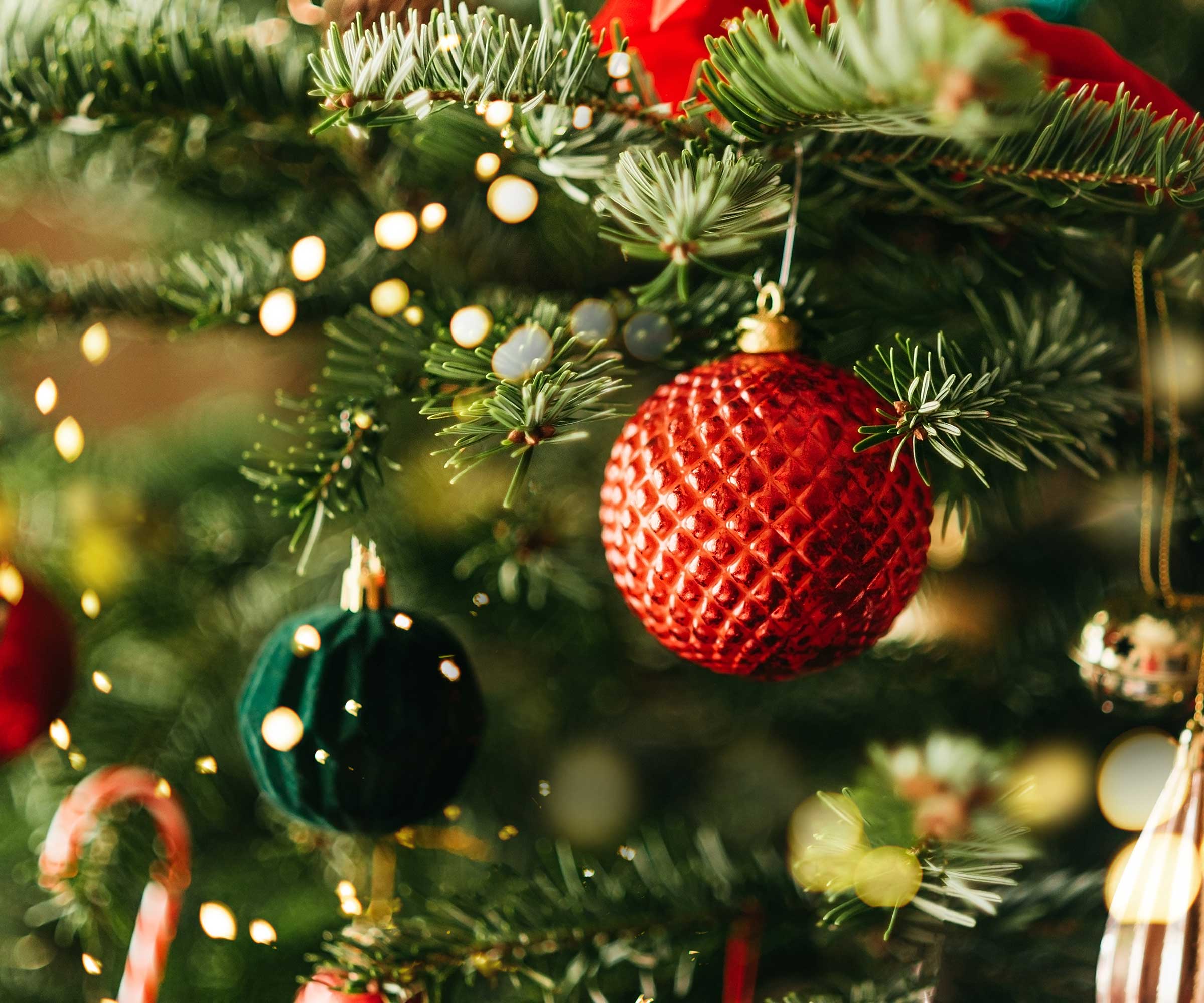
If your Christmas tree isn't taking up water, you're going to quickly run into problems. From dry, browning needles to drooping branches and even bad smells, it's definitely not something that you will want to experience over the holidays.
Taking the time to learn how to care for a Christmas tree and ensuring yours is in the best possible condition to take up water is vital to keep your tree in top form. Otherwise, it might not last for the whole season.
We asked two experienced Christmas tree farmers (whose families have been in the festive tree business for more than 50 years) to talk us through the three most common reasons why a Christmas tree stops taking up water - and, importantly, what you can do about it.
1. Sap has hardened over the base

When a Christmas tree is cut, sap is produced that creates a seal, or plug, over the wound. This is useful in the wild when tree branches get damaged, as the sap seal acts as a form of preservation, protecting the snapped part of the tree from the elements.
However, this isn't so useful when it's happening to the base of your fresh Christmas tree, as this seal will prevent your tree from being able to absorb water and nutrients.
'Fresh trees have a lot of sap on the base of the trunk which can create a seal,' says Mike Lyons, owner of Christmas Trees in the Mail. 'This seal needs to be removed for the tree to drink, so before you pot your tree up and give it water, its trunk will need a fresh cut.'
Illan David Kessler, part of the team at North Pole Xmas Trees, explains how to achieve the cleanest cut through your tree.
'Trees are like roses or other flowers,' says Illan. 'Most people know to keep flowers alive longer you can give them cut to help them drink. When doing this to the base of your Christmas tree, it's important to use a sharp saw. An old fashion hand saw works great as it is actually sharper than a chainsaw.'
This fresh cut should help jolt your drooping Christmas tree back to life.
The easiest way to cut the base of your tree is to first lay it down on a durable tarp, such as the multipurpose protective cover tarp from Amazon. Once your tree is laying down on this, cut three to four inches off of the base using a sharp handsaw - the Fiskars pruning saw from Amazon will do the job perfectly. It's designed for cutting trees and has great reviews.
After your tree is cut, fluff your Christmas tree to help it regain its shape, then place it into a pot or stand with water as soon as possible so it can begin to hydrate.
The Christmas tree stand with water reservoir from Amazon is a great way to ensure that your festive fir always has access to a decent water supply (so long as you remember to refill it), plus it will blend in with the color of your tree.
2. Your tree is being exposed to too much warmth

In many festive scenes, beautiful Christmas trees are placed next to a roaring fire, creating the ultimate cozy atmosphere for the holidays. But if your tree is too close to a heat source, such as a fireplace or a heater, it will dry up and become incapable of drinking enough water to regain health.
'Keeping your Christmas tree too close to heat sources like radiators and fireplaces can dry it out and reduce its water intake,' says Mike. 'I recommend keeping your tree away from these as best as you can.'
3. Your tree was already dehydrated when you bought it

Just because you bought your Christmas tree from a farm doesn't necessarily mean that it's fresh. It could have been cut down very early in the season and stored in poor conditions, so by the time it makes it to your home it's already struggling.
'If you cut a tree too early in the year it will shed so much faster and drink less water,' says Illan. 'It's important to note that Christmas trees drink water from a certain part of their base called the cambium layer, not the whole base. It's the part just under the bark around the tree, so if the bark around the cut of your Christmas tree is damaged or pulled off when purchased, it won't drink as well either.'
'To avoid facing this issue, do all you can to ensure you bring home the freshest, best Christmas tree variety possible, and if it wasn't freshly cut that day, saw a few inches off its base when you get home,' adds Mike.
Signs of a fresh Christmas tree include a strong aroma, healthy deep green needles that aren't dry, and sturdy branches that don't stoop or feel brittle to the touch.
By following these tips, your Christmas tree will hopefully continue drinking happily. If a real tree isn't for you though, there are plenty of tips and tricks out there to make an artificial Christmas tree look more realistic.







